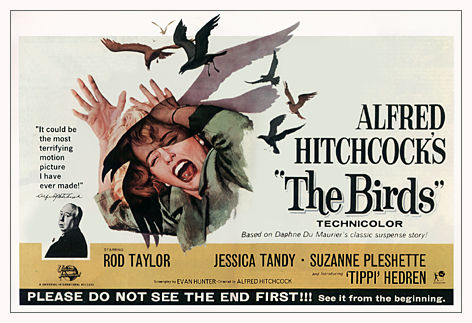–
–
Oh, hey, I guess this is a thing now. The paperback edition of BETTER OFF UNDEAD, only $7.99 (cheap)!
Feiwel & Friends always does an excellent job with their paperback line, Square Fish, and I’m grateful to be so handsomely published.
“Hilarious!” — Booklist, starred review.
“This uproarious middle grade call to action has considerable kid appeal and a timely message.” — School Library Journal.
WAIT, HOLD ON, DON’T GO!
Here’s an excerpt from pages 59-63, when Adrian and Zander encounter a dead bat . . .
–
Zander narrowed his eyes, stopped in front of a house, and pointed toward a bush. “Wow, check that out.”
We walked onto the lawn and stood near the base of an oak tree. It was a dead bat. Zander found a stick and gently poked it. He took a long look.
I said, “I’ve never seen a dead bat before.”
It was entirely brown, except for the area around its nose, which was white. The body looked like a mouse’s, but with the head of tiny pig. Its ears were comically large, I guess for the radar thingy that helps bats fly at night. Echolocation, that the word. Up close, its glossy wings looked like thin plastic, stretched from forelimbs to hind legs. All in all, an exotic creature that was perfectly adapted to a strange life.
Zander looked up at me, blinking. “This is so sad.”
“It’s a dead bat,” I said. “What’s sad about it?”
“It’s like the honeybees,” Zander said. “Remember Ms. Fjord talking about bats?”
I told Zander that perhaps I might not have been paying any attention whatsoever on the day of the bat story. Ms. Fjord, after all, told a lot of stories — it was hard to keep track. “Is this on the test?” we’d ask. And if it wasn’t, we’d tune her out.
She didn’t seem to care about tests as much as other teachers did, which many of her students found confusing. Tests were how we were measured, after all. As one kid asked, “If there’s no test, what’s the point?”
Zander was kneeling beside the dead bat. “This isn’t just about one dead bat, Adrian. There’s a plague all across the eastern states,” my friends, the walking, talking, weird-fact encyclopedia, told me. “More than seven million dead bats in the last five years.”
“Okay, that’s pretty bad.”
 “It’s way worse than pretty bad,” Zander countered. He reached into his back pocket and ripped off another Twizzler. He offered me one. Since there was something fundamentally gross about staring at a bat while chewing on a Twizzler, I declined. Zander explained, “Bats eat insects. And insects spread disease . . . to people. Bats in New York and some other states have been almost completely wiped out by white-nose syndrome.”
“It’s way worse than pretty bad,” Zander countered. He reached into his back pocket and ripped off another Twizzler. He offered me one. Since there was something fundamentally gross about staring at a bat while chewing on a Twizzler, I declined. Zander explained, “Bats eat insects. And insects spread disease . . . to people. Bats in New York and some other states have been almost completely wiped out by white-nose syndrome.”
He pointed with the stick at the bat’s nose. It was strangely white.
“How do you know this stuff?” I asked. “What do you do all day?”
“You know I don’t care about sports,” Zander said. “That frees up a lot of time for reading.”
“Yeah, but –“
“Think about all the basketball statistics you know,” Zander challenged me. “All that useless information cluttering your brain.”
“So instead of knowing that Kobe Bryant won five championship rings . . .”
Zander nodded. “I know that brown bats are headed for the endangered list.”
“Do you think any of this stuff . . . explains me?”
Zander laughed. “Adrian, nothing explains you! All I know is nature is off balance. Climate change. Polar bears losing their habitat, dying out. Honeybees and bats disappearing. Zombies appearing.”
I wondered, once again, if maybe I wasn’t alone. “Do you think there’s more than just me?”
Zander stood, puffing from the effort. “What? You figure you’re the only one?”
I waved away a fly, shrugged my shoulders. “I don’t know. But wouldn’t we have heard if there were more?”
Zander sucked thoughtfully on his lower lip. “If I was a zombie? I’d keep it under my hat, you know. Who needs the abuse?”
Maybe he was onto something. Were other zombies out there? Not just one or two, but lots of us? Kids in other towns, closeted away out of sight? Zombies in basements, playing video games, afraid to come out? We’d hear about it, right? I wondered how many people knew about me. Not just rumors and gossip, but really knew the truth. If people heard the story that some random kid had turned into a zombie, would anyone even believe it?
Doubtful.
Maybe that’s why Dr. Halpert worked so hard to keep things quiet. He said I’d been through enough, that I didn’t need the distraction. No television interviews, no reporters. Which was find with me because: Obviously!
Zander interrupted my reverie. “Come on, let’s go get a slice. I’m getting one of those giant-size sodas — and I’m not sharing, so deal with it.”
–









